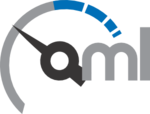| 12 | | As all Wiki pages, this page is editable, this means that you can |
| 13 | | modify the contents of this page simply by using your |
| 14 | | web-browser. Simply click on the "Edit this page" link at the bottom |
| 15 | | of the page. WikiFormatting will give you a detailed description of |
| 16 | | available Wiki formatting commands. |
| | 7 | == Description == |
| | 8 | OML was originally conceived to provide measurement facilities for OMF-enabled testbeds, such as the [http://www.orbit-lab.org ORBIT Testbed]. It is now a stand-alone tool which can also be run independent of OMF. OML is now a generic software framework for measurement collection. |
| 40 | | For a complete list of local wiki pages, see TitleIndex. |
| | 24 | * OML client library: the OML client library provides a C API for applications to collect measurements that they produce. The library includes a dynamically configurable filtering mechanism that can perform some processing on each measurement stream before it is forwarded to the OML Server. The C library, as well as the native implementations for Python (OML4Py) and Ruby (OML4R) are maintained here. |
| | 25 | |
| | 26 | * OML Server: the OML server component is responsible for collecting and storing measurements inside a database. Currently, SQLite3 and PostgreSQL are supported as database backends. |
| | 27 | |
| | 28 | A bundle of OML-instrumented applications is also provided that perform measurements and filter and collect them using OML, including an OML-capable version of Iperf as well as wrapper applications for libsigar and libtrace. |
| | 29 | |
| | 30 | == Third Party Libraries == |
| | 31 | * OML4J is a Java Injection Point (Maintained by NITLab it also has example of use within an Android application. |
| | 32 | * OML4JS is a !Javascript/!WebSocket library to collect measurements from webpages, maintained by Fraida Fund from NYU Poly. |
| | 33 | |
| | 34 | == Bugs == |
| | 35 | If you think you found a bug, please log in to this website and click New issue in the top menu. If you do not have an account, feel free to register. Alternatively, you can send your bug report via email: oml-issues AT mytestbed.net (does not require an account). Please attach log files and describe which version of OML and what platform you are using. |
| | 36 | |
| | 37 | == References and Citations == |
| | 38 | |
| | 39 | The OML architecture is described in a few academic publications. Perhaps the most relevant are the following (see the attached BibTeX file [attachemnt: oml.bib]): |
| | 40 | |
| | 41 | Manpreet Singh, Max Ott, Ivan Seskar, and Pandurang Kama, "ORBIT measurements framework and library (OML): Motivations, design, implementation, and features," in !TridentCom 2005, Feb. 2005. [http://www.orbit-lab.org/raw-attachment/wiki/Orbit/Documentation/Publications/final-oml-paper.pdf [Download] ]. |
| | 42 | |
| | 43 | Olivier Mehani, Guillaume Jourjon, Thierry Rakotoarivelo, and Max Ott, "An instrumentation framework for the critical task of measurement collection in the future Internet," Computer Networks, vol. 63, pp. 68-83, Apr. 2014. doi:10.1016/j.bjp.2014.01.007 [http://www.nicta.com.au/pub?id=6718 [Download]] |
| | 44 | |
| | 45 | Jolyon White, Guillaum Jourjon, Thierry Rakotoarivelo, and Max Ott. "Measurement architectures for network experiments with disconnected mobile nodes," in TridentCom 2010, May 2010 [http://www.nicta.com.au/pub?id=3298 [Download]] |
